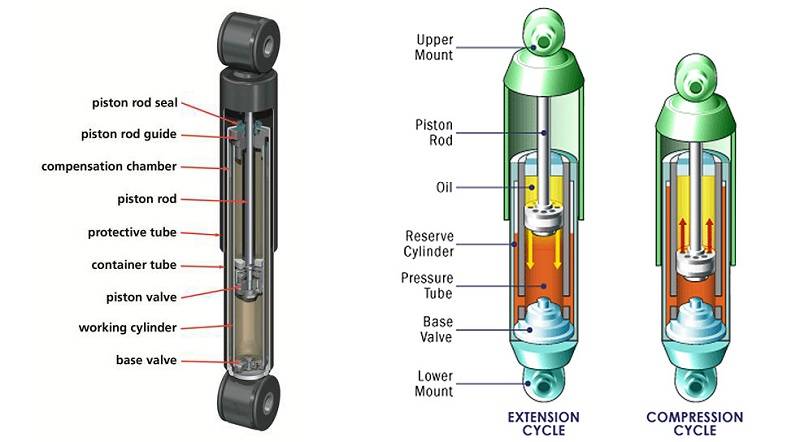What Are Shock Absorbers and How Do They Work?

When a car hits a bump in the road, the impact shoves the wheel up. In a rigid car with no suspension system to speak of, this means the force of the impact transmits directly to the driver, which can be extremely jarring. Not only that, the impact can also cause a bouncing motion in which the tires lose contact with the road, meaning less control for the driver.
Enter the shock absorber, otherwise known as a damper. Actually, the name 'shock absorber' is a misnomer, because these devices do not actually absorb shocks. Instead, it's the springs that do this.
The dampening process
As the wheels move upward after hitting a bump the springs compress, effectively absorbing the shock of the bump. But as the springs compress, they store potential energy that must be released, or else, it will bounce back and push the vehicle's body further upward than what the bump could cause in the first place.
The shock absorbers work to slow down and reduce the magnitude of the bouncing motion by converting the kinetic energy into heat energy that can be dissipated through the hydraulic fluid contained in the absorber assembly. This conversion of energy keeps the vehicle's body from bouncing excessively, providing a more stable ride and helping keep the tires in contact with the road.
The principle behind shock absorbers
 ©howstuffworks.com
©howstuffworks.comWhen you swim, the water resists and restricts your movement, that's why you move much slower in water than you do outside it. This is the principle behind how shock absorbers work. Inside the shock absorber is a piston that moves inside a tube filled with hydraulic fluid. As the piston pushes into the tube, it forces the fluid out through tiny holes and valves, thereby controlling the amount of resistance to movement.
All modern shock absorbers are velocity-sensitive, which means the bumpier the ride, the more resistance the shock absorbers provide. This allows for better control over all the unwanted motions that occur when traveling on uneven or rough terrain, including vehicle sway and brake diving.
Types of shock absorbers
Although there have been many different designs for shock absorbers, they generally come in three different types, serving different purposes depending on the vehicle.
Conventional telescopic type - This is the most common type of shock absorber. Largely inexpensive, conventional telescopic shock absorbers are often replaced than repaired when they wear or break down. They are commonly found in economic, low-end and entry-level vehicles.
Strut type - This type of shock absorber is used to support strut type suspension systems. Strut-type shocks are built stronger than conventional telescopic and can handle larger loads and stronger impacts. These come in both sealed in repairable units.
Spring seat type - Spring seat shocks combine the simplicity of telescopic shocks with the durability of strut types. Like the latter, spring seat shocks act as both a suspension unit and damping device at once. However, like telescopic shocks, they cannot be repaired once damaged.
Featured Articles
- Latest
- Popular
Recommended Articles For You
Featured Cars
- Latest
- Upcoming
- Popular
Car Articles From Zigwheels
- News
- Article Feature
- Advisory Stories
- Road Test

